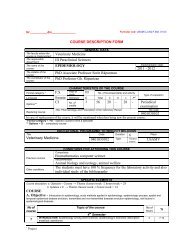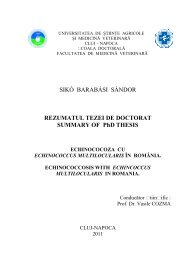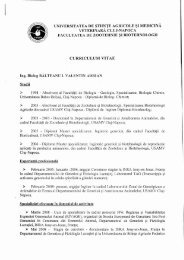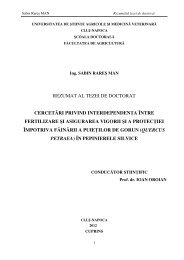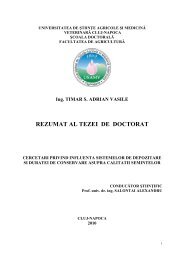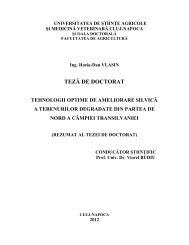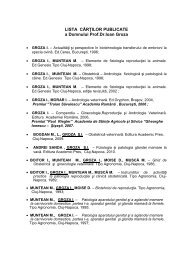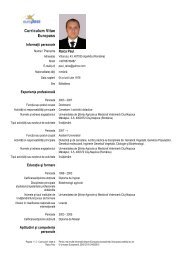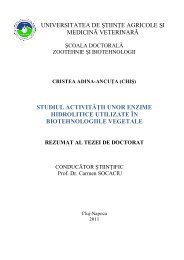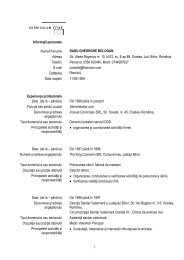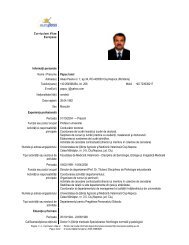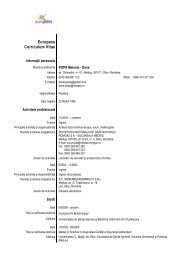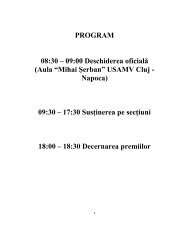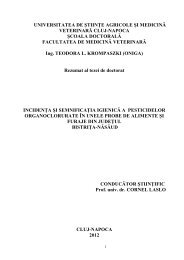Rezumatul tezei de doctorat - USAMV Cluj-Napoca
Rezumatul tezei de doctorat - USAMV Cluj-Napoca
Rezumatul tezei de doctorat - USAMV Cluj-Napoca
Create successful ePaper yourself
Turn your PDF publications into a flip-book with our unique Google optimized e-Paper software.
the minimum growing diameter, of 31,57 mm, was realized by the colonies inoculated from<br />
Motiş water samples, and the maximum diameter, of 38,11 mm, the water samples from<br />
Ariniş.<br />
II.2.2. Comparative results regarding the <strong>de</strong>velopment<br />
of Saprolegnia colonies on the liquid culture media<br />
The usage of liquid culture media is necessary to obtain bigger quantities of fungal<br />
mass, for DNA extraction.<br />
This experiment was performed to observe and recommend the best transfer<br />
combination from solid culture medium to the liquid one, estimating the fungal mass<br />
quantity, in cm 3 .<br />
There were observed and analyzed 138 samples, 69 samples on each culture medium<br />
combination. Daily observations ma<strong>de</strong> from the transfer day up to the seventh day indicated<br />
almost a double rhythm of <strong>de</strong>velopment in Potato Dextrose Broth (PDB) liquid medium<br />
compared to the samples in Sabouraud Dextrose Broth (SDB) liquid medium. In day seven,<br />
in all 100 ml Erlenmeyer glasses, the fungal pellets from Potato Dextrose Broth (PDB)<br />
liquid medium had between 2,5 and 4 cm 3 , compared to the colonies <strong>de</strong>veloped in Potato<br />
Dextrose Broth (PDB) liquid medium, with values of 1-2 cm 3 .<br />
Further to the results, only the fungal samples obtained in bigger quantities on Potato<br />
Dextrose Broth (PDB) liquid medium were analyzed.<br />
II.3. THE MORPHOLOGICAL DESCRIPTION OF SAPROLEGNIA STRAINS<br />
The microscope observations indicated the fact that the hyphae have a characteristic<br />
unsegmented aspect of lower fungi. There were not analyzed the hyphal length and<br />
thickness, only the morphological general aspect, which confirmed the presence of<br />
saprolegnian fungi in the culture, without any morphological differentiation between genera<br />
and species. The microscope observations performed on a period of 21 days evaluated at<br />
every sample the presence or the absence of sexual reproduction organs, as well as the<br />
60



